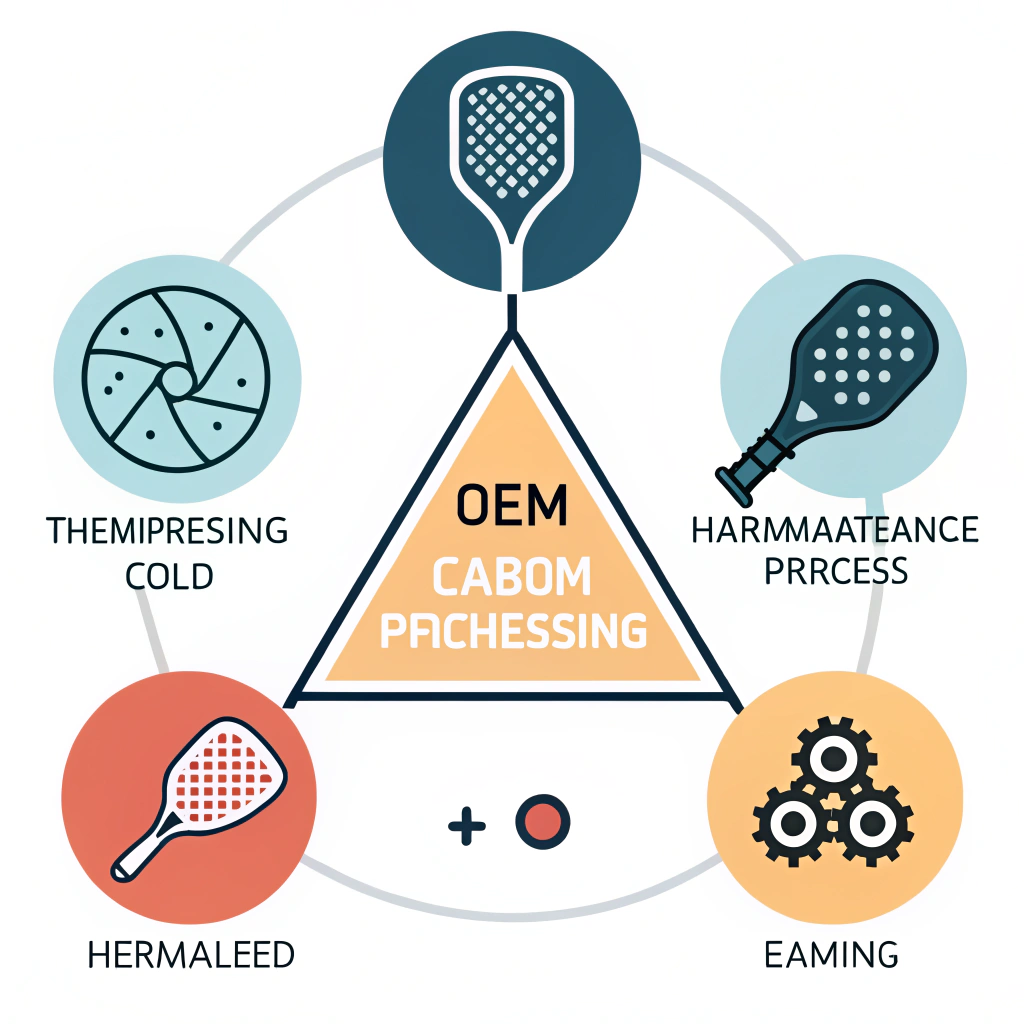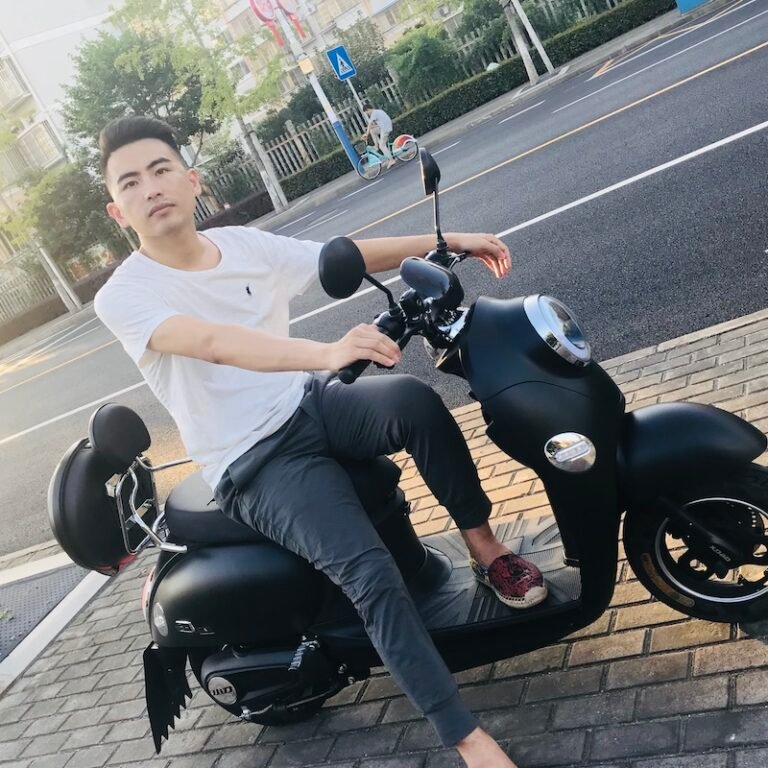In this article, we compare production techniques and material choices to help you confidently source OEM1 pickleball paddles for your sporting goods portfolio.
High-performance pickleball paddles are in high demand as the sport continues its rapid expansion globally. For procurement managers and product developers, selecting an OEM partner that understands carbon fiber2 properties and advanced manufacturing techniques is crucial. When it comes to custom paddle manufacturing, several production processes come into play. Each process affects the final product's weight distribution, durability, cost, and overall performance.
At NEX Pickleball, we invest in advanced technologies such as hot pressing3, cold pressing4, and thermoforming5. Each technique has its advantages and trade-offs, making it essential for decision-makers to understand their effects on paddle characteristics.
Hot pressing3 involves heating materials and applying high pressure to shape the paddle. This process is ideal for creating high-strength paddles with excellent impact resistance. When materials like 3K Carbon Fiber, 12K Carbon Fiber, or composite structures are hot pressed, the resultant paddle exhibits enhanced durability and a robust feel suitable for competitive play.
Advantages of hot pressing include:
- High production efficiency for large volumes.
- Enhanced structural integrity.
- Superior impact resistance.
However, this method may alter some material properties that influence the paddle’s final feel. Companies might require significant equipment investments, which can be reflected in pricing.
On the other hand, cold pressing4 is performed at room temperature with controlled mechanical pressure. This method ensures that the inherent properties of the material—especially fiberglass or composite blends—remain intact. It provides superior ball feel and offers precise control over paddle thickness.
Key benefits of cold pressing are:
- Preservation of material properties for enhanced control.
- High precision in paddle dimensions.
- Improved ball response due to better material consistency.
The primary drawback is the longer production cycle, which might affect overall lead times and make this process more suitable for products where precision is paramount.
Thermoforming5 involves heating materials until they soften, then molding them into the final shape using designated molds. This process is best suited for paddles with complex designs or specific ergonomic needs. It allows for intricate distribution of carbon fiber layers and other composite materials, delivering a product that balances performance and aesthetics.
Benefits of thermoforming include:
- Customizable design features to align with brand requirements.
- Precise control over material layout.
- Enhanced performance through tailored weight distribution.
Despite its versatility, thermoforming requires longer production times and higher equipment costs, making it ideal for premium products or limited-run custom designs.
The following table outlines the pros and cons of each production process:
| Process | Advantages | Disadvantages |
|---|---|---|
| Hot Pressing | High efficiency, strong impact resistance, excellent durability | Potential alteration of material properties, high equipment costs |
| Cold Pressing | Maintains material properties, precise control, enhanced ball feel | Longer production cycle, requires precise pressure control |
| Thermoforming | Complex design capability, tailored material distribution, premium feel | Extended production time, higher costs, best for custom/premium products |
This table can help guide your decision when considering which manufacturing process aligns best with your target market and product performance characteristics.
When discussing custom OEM pickleball paddles, it is important to note that material selection plays an equally crucial role alongside the manufacturing process. We offer a range of materials to suit different performance needs:
- 3K Carbon Fiber: Known for its strength and flexibility, it is optimal for paddles that need a high rebound force and durability while reducing vibration.
- 12K Carbon Fiber: With a higher thread density, this material creates a smoother surface and delivers superior impact resistance.
- T300 Carbon Fiber: Offers a balance of strength and light weight, making it ideal for paddles that require both durability and agile performance.
Beyond pure carbon fiber, mixing materials such as fiberglass enhances the paddle's overall performance by providing a broader sweet spot and improved control. Composite options include:
- Carbon Fiber and Fiberglass Composite: Merges the benefits of both materials, delivering a balanced performance of power and control.
- Bamboo Core Composite: Offers a lightweight design with a clear hitting feel, ideal for long-duration gameplay.
- Honeycomb Core: Manufactured from high-density polymers, it provides superior shock absorption and vibration reduction.
The core of the paddle is critical for determining its rigidity, control, and overall hitting experience. Choices include:
- Nomex Honeycomb Core: Ensures excellent shock absorption, ideal for players seeking durability.
- Aluminum Honeycomb Core: Provides balanced weight and precision, perfect for competitive play.
- Polymer Honeycomb Core: Offers flexibility that minimizes vibration, making it suitable for recreational players.
By offering significant customization—such as specific design features, custom weight distributions, and precise grip dimensions—OEM partners can cater to a diverse range of player levels, from beginners to elite competitors.
Ensuring product quality while remaining cost-effective is at the heart of successful OEM partnerships. At NEX Pickleball, comprehensive quality control measures are in place at every stage of production. Each paddle undergoes rigorous testing to assess durability, flexibility, and performance consistency, ensuring that every product meets the highest standards expected by distributors and players alike.
- Advanced Production Techniques: Utilizing hot pressing3, cold pressing4, and thermoforming5 allows for precision manufacturing, reducing material waste and enhancing product consistency.
- Material Quality: Sourcing premium carbon fiber and composite materials ensures that every paddle is robust, durable, and performs well in high-stress game situations.
- Customization Capability: By offering on-demand print services and tailored paddle dimensions, we ensure our products meet client specifications, eliminating the risk of unsold inventory due to mismatched designs.
- Efficient Production Cycles: Investing in state-of-the-art machinery and process optimization helps keep production costs in check without compromising quality.
The balance between cost and quality is achieved through continual innovation and strategic investments in production capability. Our competitive pricing structures provide you with an opportunity to offer high-performance paddles at a price point that appeals to end-users while ensuring healthy margins for distributors and retailers.
In the increasingly competitive field of OEM pickleball paddle manufacturing, understanding and leveraging the right production process is key. Whether you opt for hot pressing3 for high-volume and durable designs, cold pressing4 for precise, high-control products, or thermoforming5 for premium custom solutions, knowledge of the intricacies involved can enhance your procurement decision-making process.
Our commitment at NEX Pickleball is to provide a manufacturing partnership that combines technological advancement, top-tier material sourcing, and rigorous quality control, enabling you to deliver a high-performance product that meets the needs of both recreational and competitive players.
As a procurement manager or product developer in the sporting goods market, the next steps might include:
- Requesting detailed manufacturing process insights and custom design samples.
- Reviewing performance data on materials like T300 Carbon Fiber and composites.
- Scheduling a consultation to discuss production timelines, quality control protocols, and cost-effective pricing structures.
By taking this informed approach, you can ensure that your product line not only stands out in performance but also offers competitive value for money, bolstering your portfolio in a thriving market.
Q1: What is the best carbon pickleball paddle for the money?
A1: The best carbon pickleball paddle for the money depends on balancing performance with cost-effectiveness. High-performing paddles, like those incorporating advanced carbon fiber materials and optimized through processes such as hot pressing or thermoforming, deliver strong impact resistance and enhanced durability at a competitive price. Options such as the Six Zero DBD Control and other rated models often provide excellent all-court performance for intermediate to advanced players.
Q2: Are carbon fiber pickleball paddles worth it?
A2: Yes, carbon fiber pickleball paddles are worth it. They are created by weaving strands of high-quality carbon fiber and setting them in resin, resulting in paddles that are not only robust and durable but also provide excellent control and power when hitting the ball. This material choice enhances both performance and longevity, making them a smart investment for competitive play.
Q3: What is the #1 rated pickleball paddle for the money?
A3: The "#1 rated pickleball paddle for the money" label can vary depending on market reviews and performance criteria. Highly rated models, including variations from JOOLA and Paddletek, are noted in top lists for their blend of performance, durability, and pricing. Typically, consumers comparing cost against overall performance lean towards paddles that offer solid durability and excellent control while maintaining a reasonable price point.
-
OEM: Click here to read more about Original Equipment Manufacturers, including how OEMs streamline production partnerships and add value to your supply chain. ↩
-
Carbon Fiber: Click here to explore the advanced properties of carbon fiber, its applications in high-performance products, and its benefits for enhancing durability. ↩
-
Hot Pressing: Click here to understand the hot pressing technique, its role in shaping high-strength products, and its impact on production efficiency. ↩ ↩2 ↩3 ↩4
-
Cold Pressing: Click here to learn about the cold pressing process, its benefits in maintaining material integrity, and how it contributes to precision manufacturing. ↩ ↩2 ↩3 ↩4
-
Thermoforming: Click here to delve into thermoforming, its methodology in creating complex designs, and its advantages for producing customized, premium products. ↩ ↩2 ↩3 ↩4







